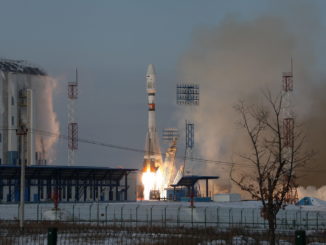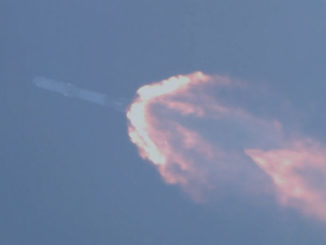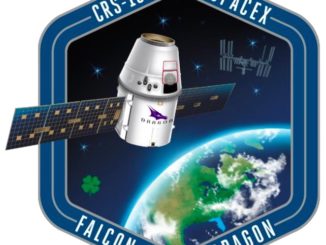Stationed aboard a Gulfstream business jet over the Indian Ocean, an international team of scientists observed a mysterious fragment of space junk falling through Earth’s atmosphere Friday years after it was discarded on a deep space mission.
Astronomers saw the re-entry, which was predicted after the object’s rediscovery in early October, as a prime research opportunity to study the behavior of objects plunging to Earth at high speed, even faster than typical chunks of space junk coming back from low Earth orbit.
Named WT1190F, the object was about 1-2 meters (3-6 feet) across with low density, leading experts to conclude it was likely a rocket or spacecraft fragment from an Apollo lunar mission or a more recent deep space launch. It was found in a highly elliptical orbit around Earth taking it twice as far as the moon during each circuit of the planet.
After tracking the object twice in 2013, astronomers with the University of Arizona’s Catalina Sky Survey detected it again in October and found it on a trajectory to re-enter Earth’s atmosphere over the Indian Ocean just south of Sri Lanka.
Chartered by the International Astronomical Center and the United Arab Emirates Space Agency, the Gulfstream 450 flight hosted scientists from the IAC, the UAE Space Agency, NASA’s Ames Research Center, the SETI Institute, the Clay Center Observatory in Massachusetts, Embry-Riddle Aeronautical University, and two researchers from the University of Stuttgart in Germany sponsored by the European Space Agency.
The aircraft had to be positioned in clear skies above a blanket of clouds that blocked ground-based observers from viewing the event.
“Much of our flight to the area saw haze above our flight altitude at 45,000 feet, but our navigator, pilot and first officer found a small clearing and managed to put the aircraft there at the right time,” scientists from the SETI Institute wrote on their website. “We had a perfect view of the WT1190F reentry, which was bright by naked eye. We have incredible imaging data and also succeeded in doing quality spectroscopy at blue and red wavelengths, which is a first for us in daytime conditions.”
Scientists say the example of WT1190F, which was discovered to be heading toward Earth a month in advance, is a model for potential asteroid impacts in the future, where incoming objects could be found with weeks of warning.
“This event was therefore good to practice some of the procedures that NASA’s Near-Earth Object Observations Program would follow if a small asteroid were on a collision course with Earth,” NASA wrote in an update on its website. “Those procedures include detecting and tracking of the object, characterizing its physical parameters, calculating its trajectory with high precision modeling, and delivering accurate predictions to scientists who would like to observe the entry through Earth’s atmosphere.”
Email the author.
Follow Stephen Clark on Twitter: @StephenClark1.



